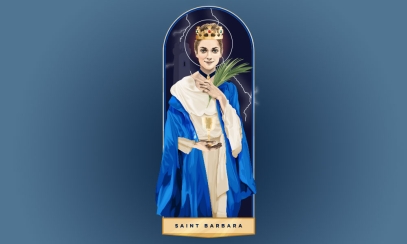Pope St. Gregory the Great - Sept. 3
“They are not Angles, but angels. They are rightly named, for their faces are angelic; and such should be the co-heirs of the angels in heaven.” These famous words from Pope St. Gregory the Great around 590 A.D., at the beginning of his papacy, were in response to hearing about the origins of some boys from Britain who had been captured and sent to Rome to be sold as slaves. He learned then that the island of Britain had not heard the Good News of the Gospel, and he vowed to change that.
From that point on, Pope Gregory was focused on re-igniting the Church’s mission of evangelizing non-Christian people in northern Europe. The most famous mission he authorized involved a fellow Benedictine monk, St. Augustine of Canterbury, in 597 to Britain, known as the Gregorian Mission.
Although Pope St. Gregory was born into a wealthy family in 540 and his education was of the highest quality, Gregory was drawn to the monastic life early on. When his father died, he converted his family’s villa to a monastery. The monastery and its church, San Gregorio Magno al Celio, are still active in Rome today, with the monastery belonging to a branch of Benedictine monks.
Gregory did not wish to be pope, but when his predecessor died, he reluctantly accepted the honor. As pontiff, he missed the austerity and discipline, but also the beauty and prayer life of the monastery which he had grown to cherish.
In addition to sending out people to evangelize during his papacy, St. Gregory was known for his concern for and almsgiving to the poor. When Rome experienced a famine in the 590s, the vast expanse of papal landholdings, which were traditionally used to generate income, were instead shipped to Rome and distributed for free to those who needed food. It is said that the papal treasury was nearly empty when he died because he gave so much away to the poor.
Pope St. Gregory the Great also is considered a saint in the Eastern Orthodox Church, Anglican Communion, and some Lutheran churches.



